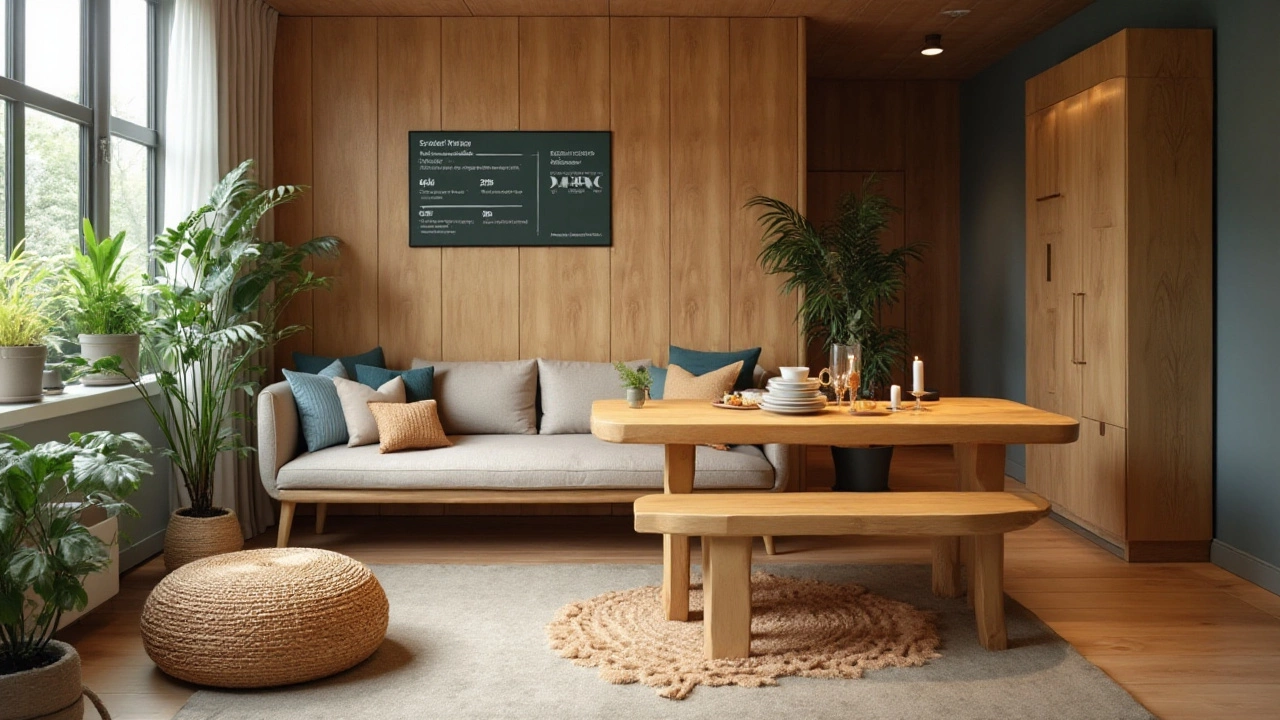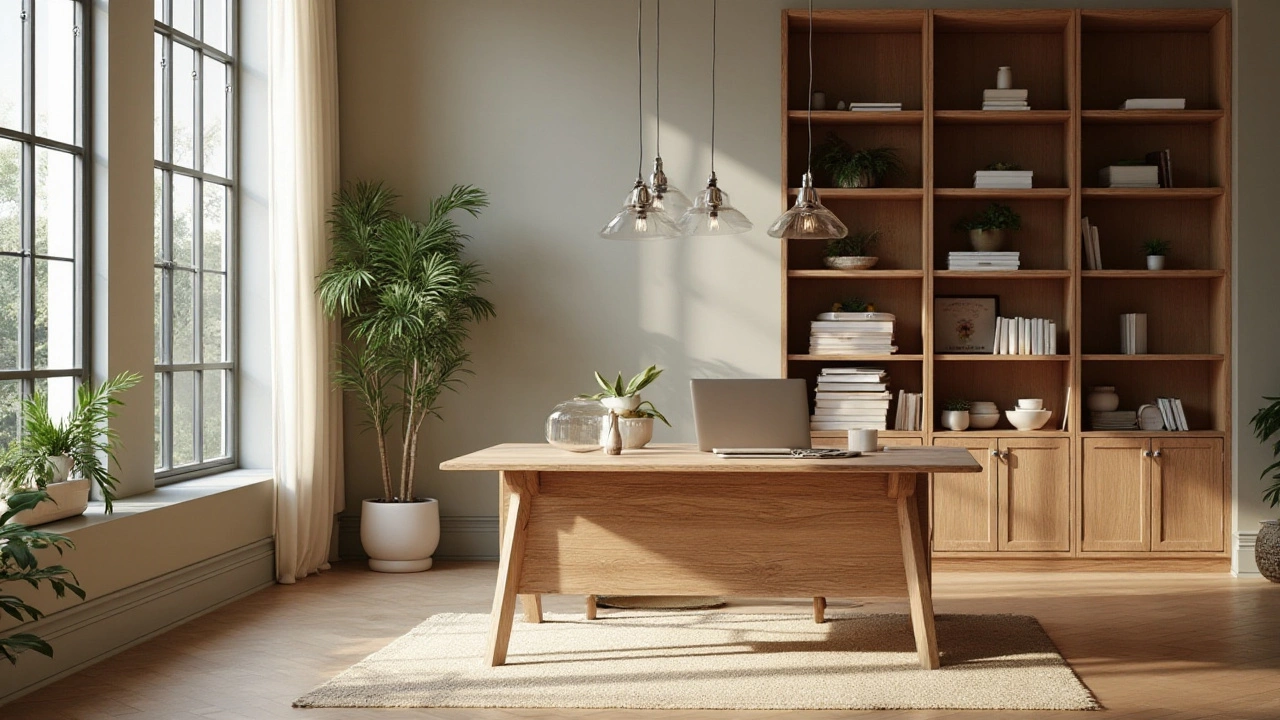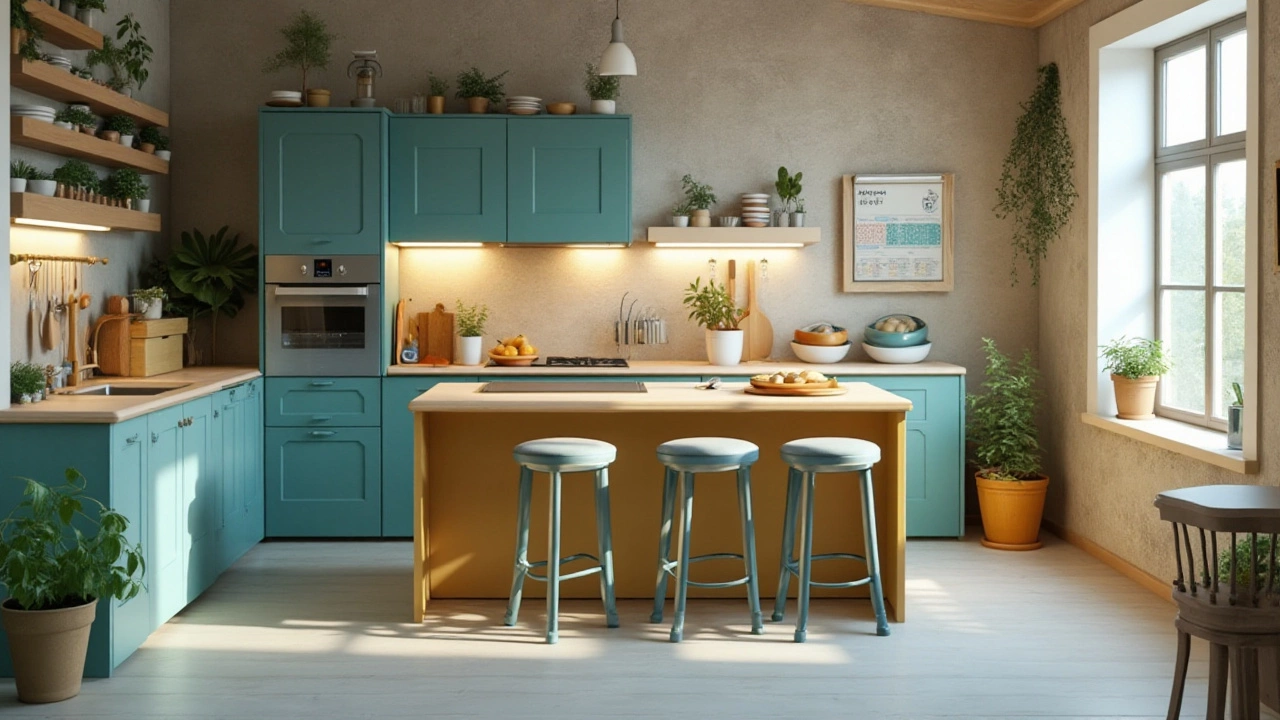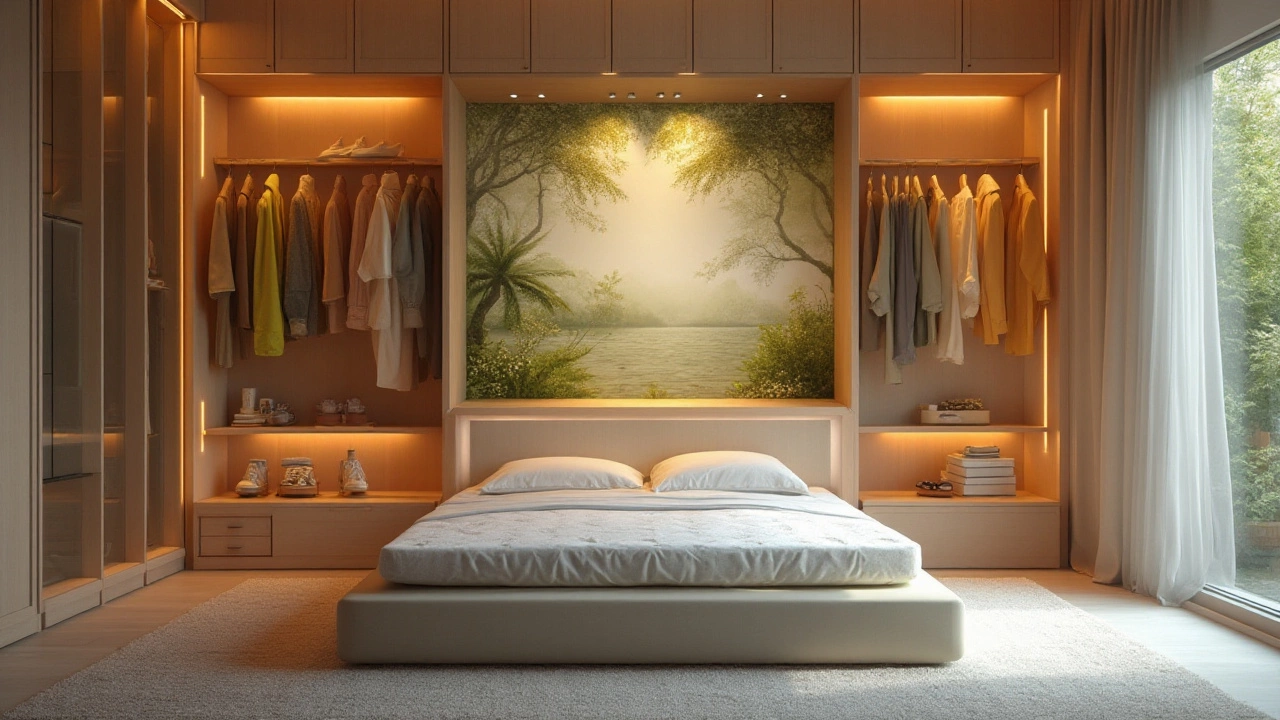High-Demand Furniture Trends in 2025
 Jan, 28 2025
Jan, 28 2025
The furniture landscape in 2025 is anything but ordinary. As daily lives shift and evolve, so too does the furniture that fills our homes. More than ever, there's a burgeoning appetite for pieces that don't just serve their traditional roles but do much more, blending versatility with style. Imagine a sofa that's not just a place to sit but also your secret storage solution, or a simple table that transforms into a digital workstation at the touch of a button.
Also under the spotlight are Earth's needs, prompting designers and consumers alike to look towards products crafted from sustainable or recycled materials. Embracing this green wave, buyers are seeking out those pieces that promise a reduced carbon footprint without compromising on the aesthetics.
And who said technology and furniture can't be a match made in heaven? The rise of smart furniture is the tangible reminder that innovation knows no bounds. With convenience at their core, smart pieces are inching into the mainstream, offering unique solutions that marry tech with comfort.
Lastly, a large chunk of furniture enthusiasts are leaning towards minimalism, where less is truly more. Clean lines, uncluttered designs, and pieces that stand as companions to a simpler, more focused lifestyle are capturing hearts worldwide. Each of these trends paints a vivid picture of what resonates with people today and how they envision their living spaces.
Multifunctional Necessities
In 2025, the demand for multifunctional furniture is skyrocketing, driven by an evolving lifestyle that demands versatility in every aspect. Gone are the days when a sofa was simply a seating device or a table merely a flat surface to eat on. Today’s consumers cherish pieces that embrace duality and utility, effectively maximizing every square inch of living space. This trend has taken root particularly in urban environments where space often comes at a premium. A rising number of city dwellers are investing in furniture designs that can morph to meet multiple needs, echoing a lifestyle that is diverse, busy, and always on the go.
Consider the humble sofa bed, which has transcended its utilitarian past to become a stylish must-have in compact apartments. Many of today's models boast high-end designs and innovative mechanisms that allow them to transform effortlessly without sacrificing comfort or aesthetics. Add to this the fact that some sofas now come with integrated storage options, and you've got an all-in-one product perfectly suited for small-space living. This clever use of interior design space reflects a broader push for furniture that fits seamlessly into its environment, adapting to our changing needs.
Innovations and Designs
Innovative furniture designers are rising to this challenge, developing items that fold, expand, and reposition to serve different purposes. Take the transforming coffee table, for instance, which can elevate from a low-level relaxation companion to a full-height dining experience. Such transformations are more than just party tricks; they represent a real increase in the functionality delivered to the user. It's a dynamic that appeals to both millennials and the older generations, as multifunctionality becomes synonymous with modern living.
"The beauty of multifunctional furniture is in its smart use of space. It's like having a Swiss army knife in your living room," says Emma Pearson, an esteemed furniture design expert.
Another captivating innovation is the rise of expandable furniture. Think extendable dining tables and modular shelving units that can grow with your needs. These pieces not only offer flexibility but also reflect an eco-conscious mindset, as they reduce the need for replacing furnishings as needs change. Having furniture that adapts alongside the family dynamic or professional demands aligns well with the shift towards sustainable living and mindful consumption.
Smart and Connected Options
Of course, tech-integrated furniture also plays a role in multifunctional necessities. Desks with built-in charging ports, sofas with hidden Bluetooth speakers, and LED integrated shelving units not only serve multiple functions but do so with a tech-savvy edge. Consumers are increasingly seeking out furniture that keeps them connected and enhances their productivity without cluttering their spaces with excess technology.
In sum, multifunctional furniture is answering the call of modern living by providing pieces that offer multiple forms of utility. This integration into our daily lives is not just a trend; it's a new norm, one that aligns with how we live and work today. By investing in furniture that goes beyond its conventional purpose, consumers are reshaping what we define as functional art for the home.

Sustainable Choices
As we stride confidently into 2025, the call for sustainable choices in furniture has become more than just a whisper among design circles; it is a booming, unanimous shout. The world of interior design is increasingly opting for furniture that not only beautifies homes but also respects the Earth. This demand is sky-high, as more people realize the direct impact their purchasing decisions have on the planet. The allure of sustainable furniture lies in its dual ability to bring aesthetic joy and a clear conscience to its owners, knowing their choices minimize environmental harm.
An interesting fact to note is how furniture designers have started to creatively upcycle materials that might otherwise end up in landfills. For instance, a trend that is catching on involves using recycled wood from old boats or barns to create unique tabletop surfaces that carry stories of their past lives. This practice not only reduces waste but also imparts each piece with a fascinating history. Similarly, reclaimed metals are being transformed into stunning, industrial-style furniture that exudes character along with ecological responsibility.
Sustainability is not limited to the raw materials alone but extends to the processes employed. A growing number of manufacturers have begun adopting clean energy sources like wind or solar power in their production lines. An inspiring example comes from Dudley Piermont, a noted designer, who once said,
"Crafting pieces is not about bending nature to our will, but about working with her, humbly."His words resonate deeply within the industry and have inspired others to seek harmony with nature through their production methodologies.
Moreover, sustainable choices focus significantly on longevity and quality, moving away from the disposable culture. This means investing in pieces that are not just trend-driven but timeless, designed to withstand the test of time both in terms of style and durability. This shift is reshaping the way consumers view their spending on furniture, turning it into an investment rather than a mere purchase. It's encouraging to witness this emerging mindset where every sofa or chair is considered in terms of its lifespan and the resources expended to create it.
For the eco-conscious consumer, myriad choices are available today, ranging from locally-sourced woods certified by the Forest Stewardship Council to innovative materials like mycelium-based products, which biodegrade seamlessly back into the earth. Join the movement: the future of furniture is one where beauty and sustainability effortlessly coalesce.

Tech-Integrated Furniture
As technology becomes increasingly embedded in our daily routines, it's no surprise that the furniture in our homes is adapting to fit this evolving lifestyle. Tech-integrated furniture has stepped into the spotlight, offering exciting solutions that seamlessly weave convenience and innovation into the fabric of our homes. Imagine a world where your working desk isn't just a flat surface but a charging station, a calendar reminder, and a health tracker all rolled into one. This kind of marvel isn't a distant dream but a humble reality beginning to take shape in living rooms and offices across the globe.
One excellent example of this trend is the surge in smart desks. These multifunctional furniture trends are designed with an array of tech at your fingertips – wireless charging pads, integrated speakers, and built-in digital assistants are just a few features you might find. They're crafted not just to accommodate your work but to enhance productivity by embedding intuitive technology that works as hard as you do. In essence, they're all about transforming spaces into smart hubs, with design aesthetics beautifully crafted to blend with any decor.
Another area seeing technological integration is the world of seating. Picture a sofa equipped with USB ports for easy device charging, or chairs designed with climate control to ensure optimum comfort no matter the season. These features make tech-infused furnishings more than just a novelty; they enhance utility and elevate the experience of comfort. The shift towards such innovations is not just about adding flashy tech; it's about genuinely enriching the way we interact with the spaces around us.
Indeed, this drive to create furniture that's both smart and beautiful has caught the attention of industry leaders. According to a recent report by MarketWatch, the smart furniture market is expected to grow at a rate of 21% annually, reflecting a quick uptake as more consumers seek out these enhanced designs. This demand is fueled by a growing acceptance and reliance on technology that eases and improves our lifestyles in incremental yet impactful ways.
"The future of furniture lies in its ability to make life easier without complicating the space it occupies," says Jane Doe, a renowned interior designer whose work has embraced the incorporation of smart furniture. "It's not just about making things tech-savvy but making tech work for everyday comfort and tranquility."
But what does this mean for homes of the future? Imagine spaces that respond to your every need intuitively—lights that adjust based on the time of day, furniture that adjusts its settings while understanding your preferences, and even upholstery fabrics that clean themselves. The possibilities may seem far-fetched now, but the shift is undeniably in progress, pointing towards a future where tech-integrated furniture seamlessly becomes a part of our lifestyle, blurring the lines between utility and imagination in the most delightful ways.

Minimalist Aesthetics
There is something undeniably appealing about the minimalist aesthetics that resonate deeply with many in our fast-paced world. Stripping away the superfluous and embracing simplicity doesn't mean a lack of style; rather, it is about intelligent design that brings tranquility and functionality to everyday living spaces. Minimalism is no longer just a design trend but a lifestyle choice that champions clean, uncluttered living environments. Its rise can be attributed to the consumer's desire for balance amidst chaos, seeking solace in spaces that breathe simplicity and purpose.
The essence of minimalist design lies in its capability to transform a space using subtle nuances rather than flashy distractions. It respects the concept that less is more, uniting straightforward lines with unfussy details and muted color palettes. Decorative elements often include natural materials like wood, stone, and metals, which add warmth and texture while maintaining the room's simplicity. When meticulously executed, every piece of furniture serves a definitive purpose, contributing to the practicality of the space without overwhelming it.
Prominent designers have noted the significant impact of this trend. As Marie Kondo, the famous organizing consultant, once stated,
"The best way to find out what we really need is to get rid of what we don't."This ethos aligns perfectly with the principle of minimalism, which encourages the elimination of unnecessary items to create an environment that fosters mental clarity and focus.
The return to minimalist aesthetics speaks to a larger movement toward sustainable living, highlighting environmental awareness and ethical consumption. As people become more conscious of how their choices affect the planet, they are gravitating towards pieces that promote sustainability through durable and responsibly sourced materials. In this regard, minimalism isn't just about decorating a home — it’s about embodying a way of living that advocates thoughtful consumption and a harmonious relationship with the environment.
For anyone looking to embrace this trend, practical steps include decluttering spaces and focusing on acquiring high-quality items that serve multiple functions. It's important to maintain an ongoing assessment of what truly serves one's needs and let go of the rest. You may find that transitioning to minimalist furnishings is a journey of both aesthetic refinement and personal growth, bringing a sense of peace and satisfaction in knowing that each selected item matters. Such practices not only enhance the immediate living environment but also foster a deeper appreciation for elegance in simplicity.